Today’s leg in Route to O-Season 2020 is the longest leg in the women’s class in Junior World Orienteering Championships (JWOC) Long 2017 in Finland. The chosen leg is the 11th leg.
Note that the longest leg in the men’s class in this event was already presented back in Route to Christmas 2017 – but the men’s leg was longer.
The leg is as usually first provided without routes – you may take a look at it and think about how you would attack this leg (if the image is too small, you may click on it to get it larger):
Location
You find other maps from the area in omaps.worldofo.com here. See also latest additions in 3DRerun from this area in order to learn more about this terrain type.
Webroute
Next you can draw your own route using the ‘Webroute’ below. Think through how you would attack this leg, and draw the route you would have made. Some comments about why you would choose a certain route are always nice for the other readers.
Then you can take a look at how the runners have solved this leg below. The leg is kind of an “artificial routechoice leg” where the course setter tried to make the fastest route to the right on the road not look too tempting. However, he didn’t quite succeed, and around 70% of the runners got tempted by the road. It is possible to run straight and not lose much time – Aebersold who was fastest on the leg running on the road would probably have been fastest also on the straight choice. The course setter Jani Lakanen put it this way in his analysis:
– I ran both routes quite even, but I knew that straight will be tougher to execute well. I believe Simona could have done it same time also straight.
Maybe the leg is too evenly balanced when straight and around is planned to be approximately equal? You will save some power going around on the road, and the risk is also lower, so in that regard the balancing is maybe fine with around to the right being the better choice ….
Density map
See below for a density map of some of the ones who have drawn their routes so far (available during the day when some readers have drawn their route).
Additional information
You find the complete map in omaps.worldofo.com at this location.
Route to O-Season 2020 series
Route Choice Challenges while waiting for the real action: With the upcoming orienteering season indefinitely on hold in large parts of the the world due to COVID-19, regular orienteering route choice challenges may be one way to make sure those orienteering skills don’t get completely rusty. I’ll try to keep these coming daily, but need help from all of you out there to keep them coming and to keep up a certain quality.
Tips on good route choice challenges – either from races/trainings (even cancelled ones) or theoretical ones with accompanying analysis – are very welcome (please e-mail to jan@kocbach.net).
Not all legs are taken for the interesting routechoice alternatives – some are also taken because the map is interesting – or because it is not straightforward to see what to do on a certain leg. Any comments are welcome – especially if you ran the event chosen for todays leg!
 World of O News
World of O News
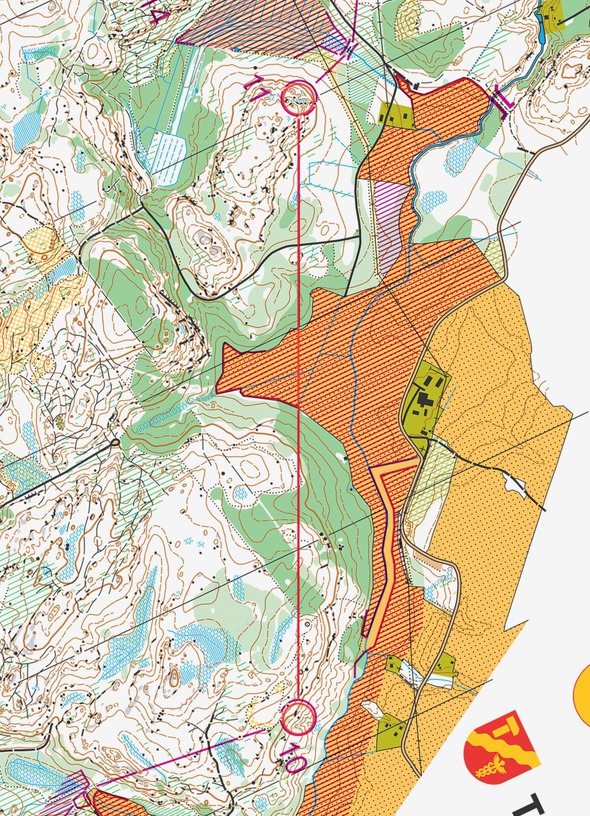
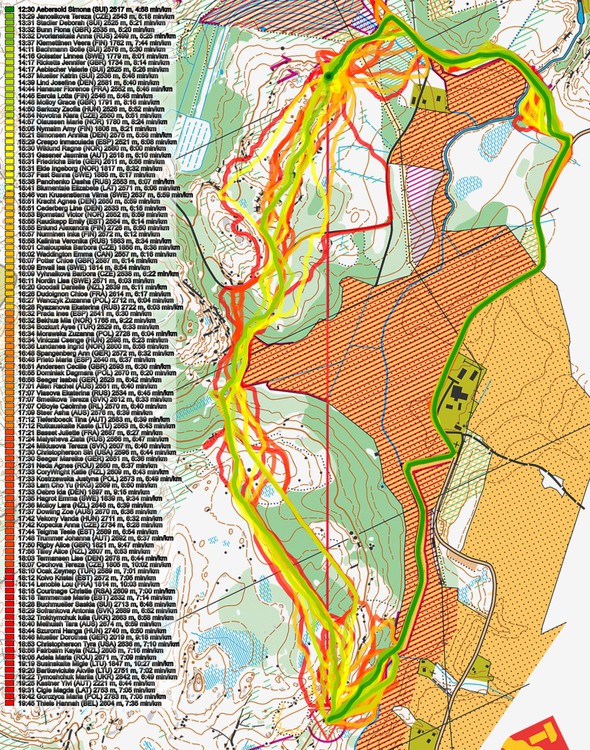
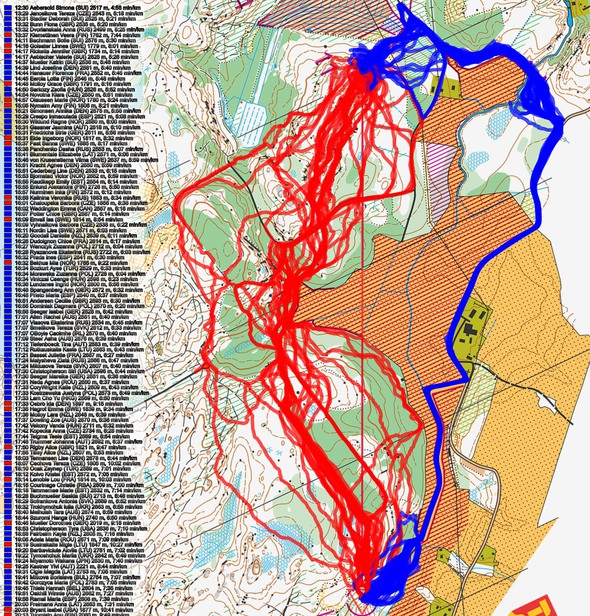
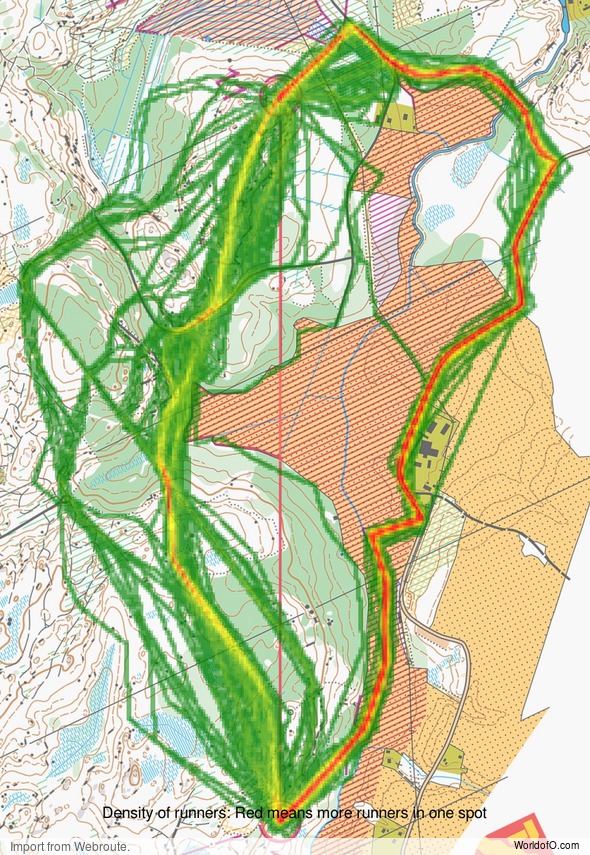
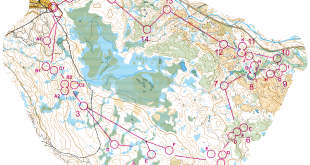
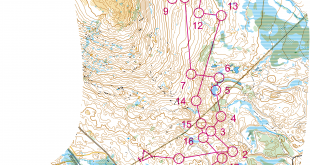
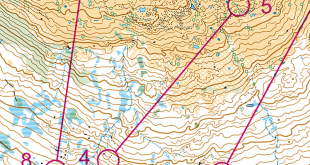
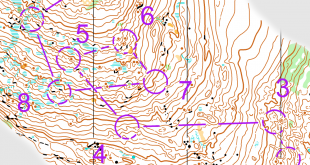
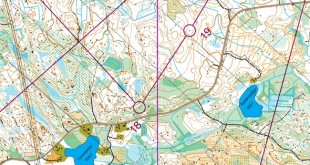
You state that 70 % chose to run via the open fields and road and that this is probably the best choice taking all factors into account, time expected for optimal execution, power saving and simplicity (how easy optimal execution is), and this sounds reasonable. Still I wonder how many would have taken this route-choice if the leg was run in reverse direction. Probably fewer than 70 % due to the mental barrier of starting the leg by running almost 180 degrees opposite direction to the straight line towards the next control?
@Knut: Yes, that’s why I think the leg is not perfectly balanced, but not too easy to hit the mark there always… Based on the heatmap it looks like there is approx 70/30 here as well.
Actually I think that this is very balanced in an optimal way. I think that most (not all) route-choice legs should aim for a split like this, namely that about 70 % of the field of runners detect and select the best route-choice, and that this route-choice also proves to be the best from the leg-times. (Thx for the reply, but you did not comment on what you think would have happened if the leg was reversed, I bet that maximum 50 % would have gone via the road and field in that case!)
About reversing the leg: Yes, I agree, then you’d use one of the most used tools in a sprint-planners toolbox.
This is why in Mountain Orienteering (when there is a lot of time on previous legs to look ahead) to check how you would run the leg in reverse – if it is the same as you have chosen then you probably have a good leg. If it is different – then is there a good reason for that?